Medu Wada, also known as Medu Vadai or Ulundu Vadai, is a beloved South Indian tiffin item that has earned fans across the country. Crispy on the outside and soft on the inside, this lentil-based fritter is made using urad dal (black gram) and is traditionally deep-fried to golden perfection. Whether served for breakfast, as a snack, or during festive occasions and weddings, Medu Wada holds a special place in South Indian cuisine. With just a handful of ingredients, this classic dish is surprisingly easy to make at home!
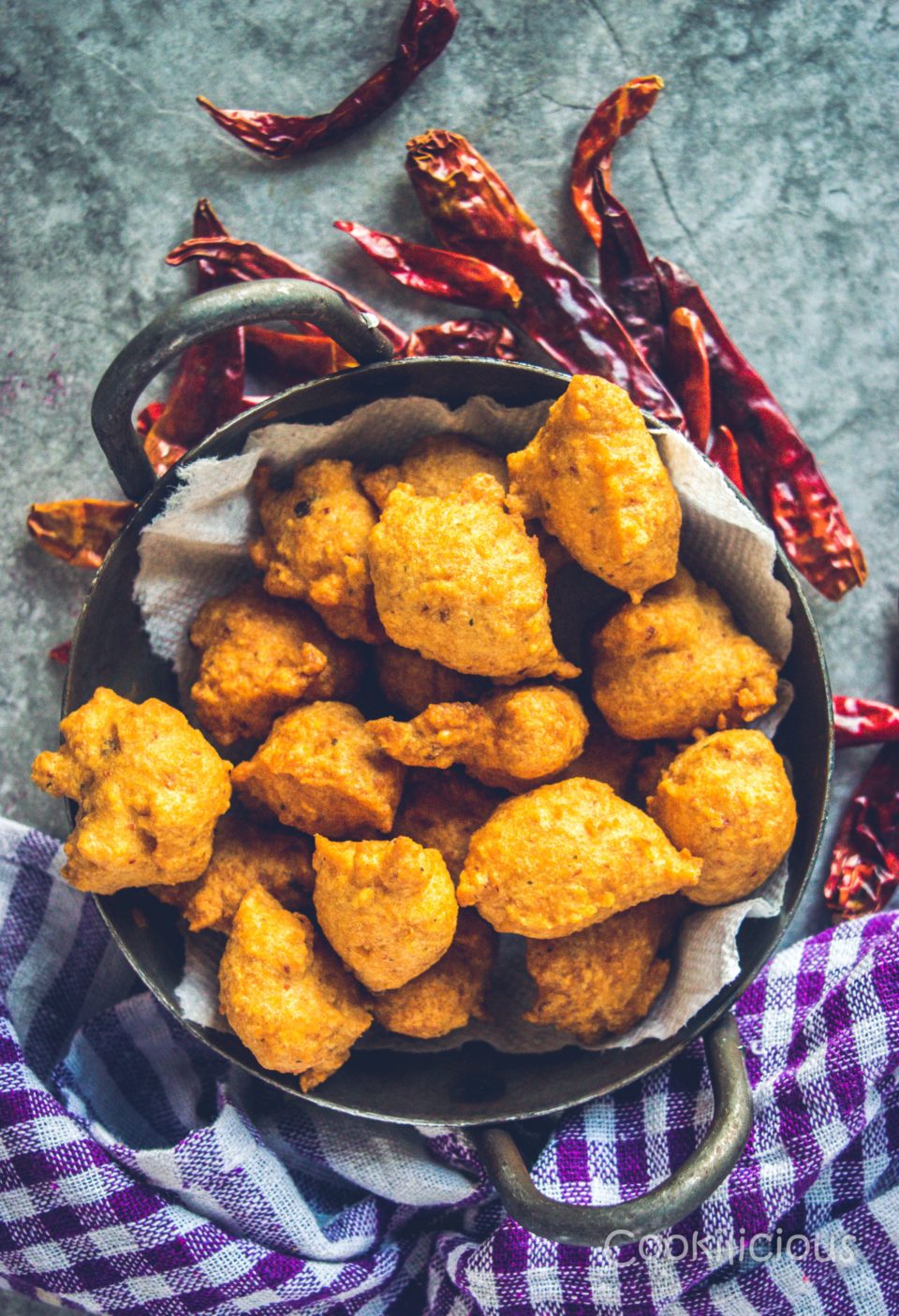
Jump to:
What Is Medu Wada
Medu Wada (also spelled Medu Vadai) is a classic South Indian savory fritter that resembles a donut in shape but is made with a spiced urad dal (black gram) batter. These crispy, golden-brown delights are deep-fried and typically served hot with coconut chutney and sambar, making them a staple in South Indian breakfasts and festive menus.
In Tamil, this dish is also known as Ulundu Vadai—where ulundu refers to urad dal and vadai means fritter. While crispy on the outside, Medu Wada is soft, fluffy, and airy on the inside, making it a beloved comfort food across South India and beyond.
Shaping Medu Wada does take a bit of skill and practice, but once you get the batter consistency right, it becomes second nature! That said, I have a foolproof hack to help you shape the Medu Vada perfectly—even if you’re a beginner. No more messy hands or misshapen vadas!
Masala Dal Vada Vs Medu Vada
While both Medu Vada and Masala Dal Vada are iconic South Indian fritters, they differ in the type of lentils used and the final texture.
Medu Wada is made using urad dal (black gram), resulting in a light, airy texture with a crisp exterior. It’s typically shaped like a donut and served with sambar and chutney for breakfast or tiffin.
On the other hand, Masala Dal Vada (also known as Paruppu Vadai) is made with chana dal (Bengal gram). It has a coarser texture, is spiced more heavily, and is often enjoyed as a tea-time snack—especially on rainy days.
While both are deep-fried and immensely popular, I have to confess—I’m always team Dal Vada! There’s something irresistible about that crunch and the bold spices that make it my personal favorite over Medu Wada.
Even though I grew up surrounded by South Indian food, I was never a fan of Medu Wada—strange, I know! My family and friends would tease me for disliking this beloved snack. There was no real reason—I just never took to it. My mom would often make Medu Wada as an offering to Lord Hanuman and insist I eat at least one as prasadam. I’d reluctantly take a bite and stop there. I always preferred Masala Dal Vada instead. After my mom passed, I couldn’t bring myself to eat Medu Wada made by anyone else. If I didn’t enjoy hers, how could I enjoy another’s? Even today, I don't eat it—but I do make it for others with love.
Why Make It
- 🌱 Naturally Vegan, Gluten-Free, Nut-Free & Soy-Free – Medu Wada fits a wide range of dietary needs, making it perfect for serving to diverse crowds during festivals or gatherings.
- 🎉 A Staple on Festive and Religious Menus – Medu Vadai is often made as an offering (prasadam) during pujas and is a must-have on traditional South Indian thalis, especially on auspicious days like Hanuman Jayanti, Navratri, or weddings.
- 🍽️ Crispy, Comforting and Full of Flavor – Crunchy on the outside and soft inside, Medu Wada is incredibly satisfying and makes a wholesome breakfast, snack, or appetizer.
- 👵🏽 A Time-Honored, Traditional Recipe – Passed down through generations, this is a classic South Indian recipe that brings back nostalgic memories with every bite.
- 💡 Versatile Pairing Options – Serve it with coconut chutney, tomato chutney, or piping hot sambar—it always shines.
- 🧑🏽🍳 Simple Ingredients, Big Flavor – Made with pantry staples like urad dal, ginger, curry leaves, and green chilies—no fancy ingredients required.
Ingredients needed 🧾
Urad Dal (Black Gram) – The star ingredient. Soaked and ground into a fluffy batter, urad dal gives Medu Wada its signature soft and airy texture. Use split or whole urad dal. You can find it in Indian grocery stores, or Amazon.
Raw Rice – Just a small amount of raw rice is added to the batter to enhance crispiness. It helps the vadas turn out perfectly golden and crunchy on the outside. Use any variety of rice.
Aromatics – A flavorful mix of green chilies, fresh ginger, curry leaves, and gluten-free asafoetida (hing) adds depth, aroma, and that classic South Indian taste to each bite.
Oil for Frying – Use any neutral vegetable oil like sunflower, canola, or peanut oil. Make sure it has a high smoke point, as the vadas need to be deep-fried until golden and crisp.
Frying Pan or Kadai – A deep frying pan or kadai works best to maintain consistent oil temperature and ensure even frying.
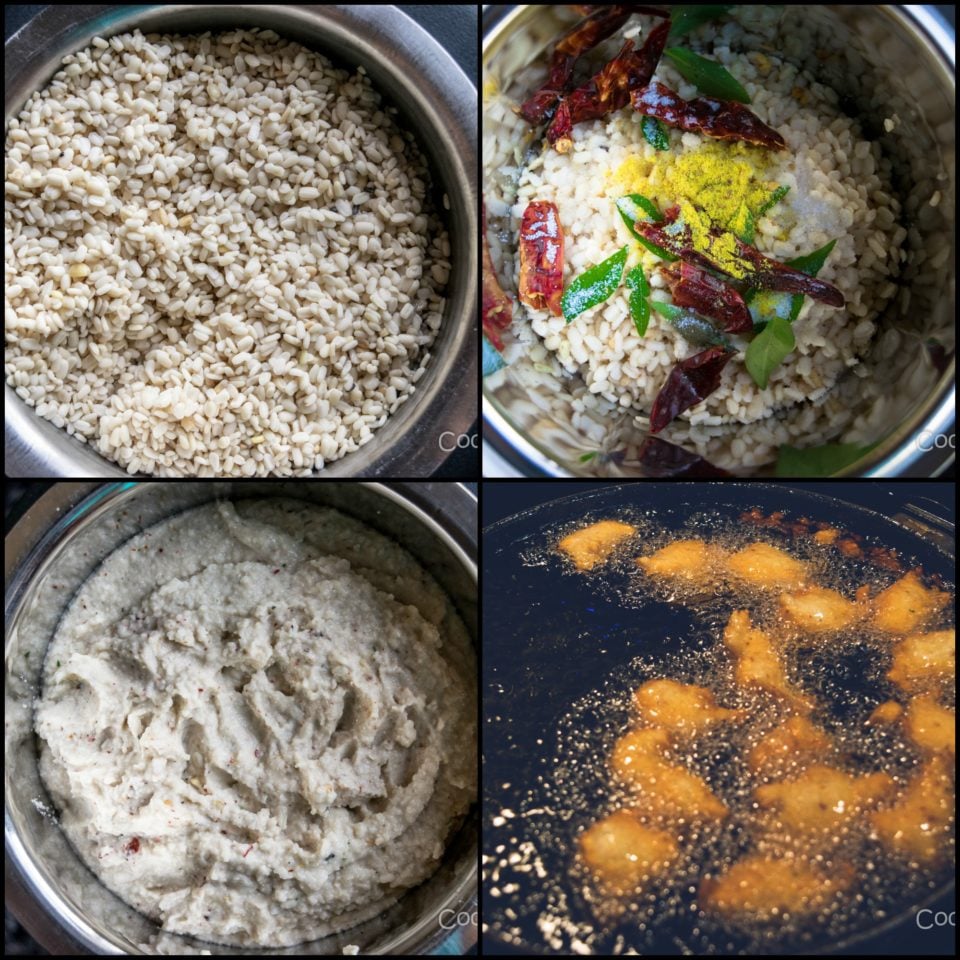
- Rinse and Soak: Rinse urad dal and raw rice thoroughly, then soak them together in water for about 1 hour.
- Drain and Grind: Drain the soaked dal and rice, and transfer them to a mixer grinder.
- Add Aromatics: Add fresh curry leaves, asafoetida (hing), green chilies, ginger, and salt to the grinder.
- Grind to Batter: Blitz everything to make a smooth, thick batter. Add only a tablespoon or so of water if needed—avoid making the batter runny. The ideal consistency should be thick enough to hold its shape when scooped.
Want to save this recipe?
- Transfer the batter to a bowl and add salt.
- Mix well, cover, and set aside. Meanwhile, heat oil for frying.
- Take a ziplock bag and slit it open. Sprinkle few drops of water on the inside surface. With wet hands, place a small dollop of batter in the center of the bag, gently flatten it, and make a hole in the middle. Chef Tip: Be careful with the water—you only need to moisten your hands and lightly wet the ziplock surface.
- Once the oil is hot, hold the ziplock bag over the oil and carefully slide the Medu Vadai into the hot oil using your hand. Fry on medium heat for 2–3 minutes without flipping, allowing it to turn golden on one side. Avoid overcrowding the pan.
- Then carefully flip the Medu Vada to the other side and continue cooking until the bottom turns golden, with no white spots remaining. The vada should be evenly golden all around.
- Carefully remove the vadas from the oil and place them on paper towels to soak up excess oil. Make as many as you need.
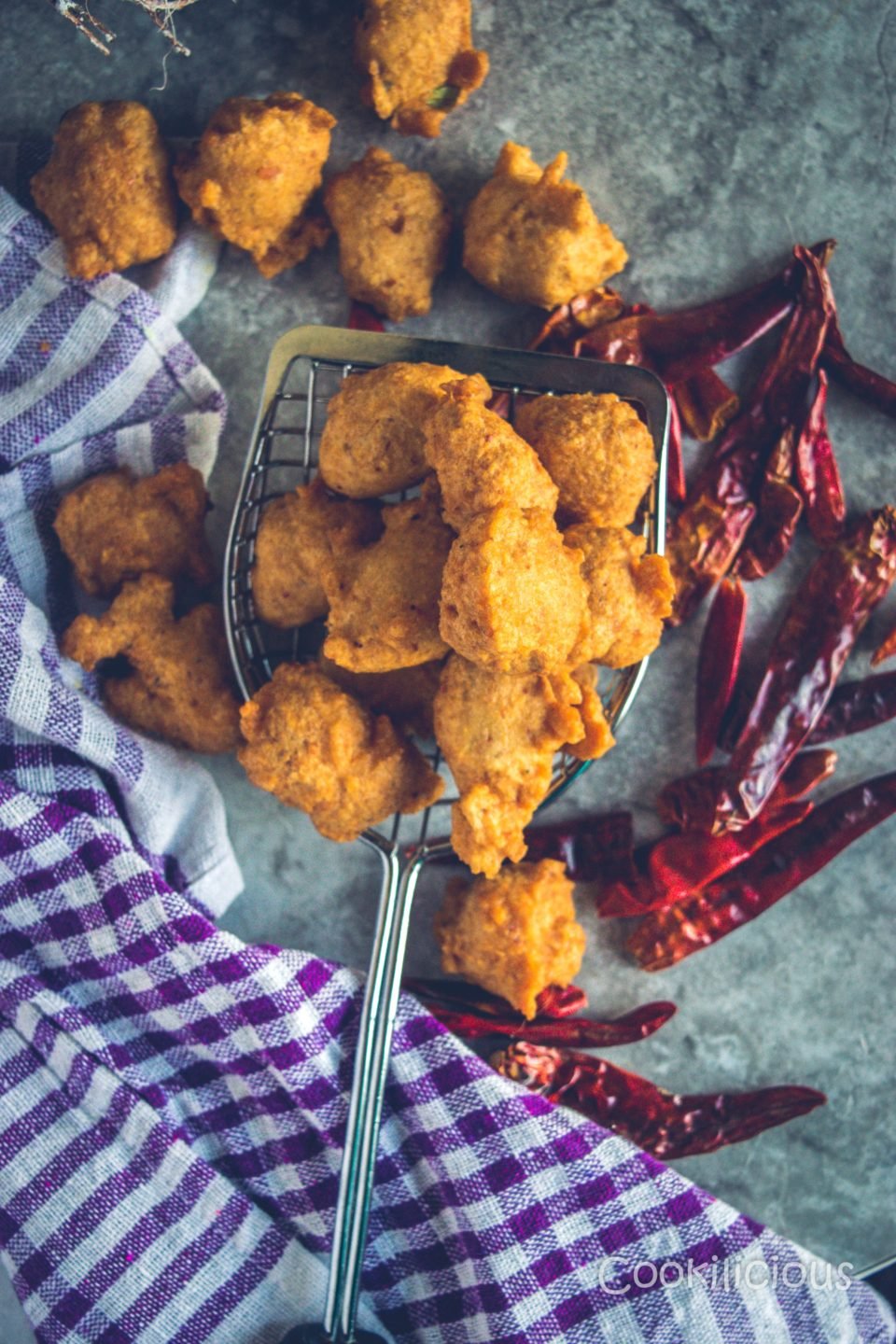
Serving suggestions 🍽
Serve hot Medu Wada with classic accompaniments like coconut chutney, sambar, or even rasam for a traditional South Indian experience. These crispy fritters are not just ideal for breakfast or tiffin—they also make an excellent South Indian party snack or vegan appetizer for get-togethers, potlucks, or festive menus.
Top recipe tips 💭
The number of vadas you get will vary depending on the size you shape them—smaller vadas will yield more from a single batch. Shaping Medu Vadai does take a bit of practice, much like making Rava Dosa. Don’t get discouraged if your first attempt isn’t perfect—it gets easier with time! You can also try using a Medu Vada Maker, a handy tool that helps shape the vadas. While I haven’t used one myself, it could be useful if you’re struggling with the traditional shaping method.
FAQs 📖
Do not make the batter runny. It should be thick and smooth. If the batter becomes runny, add a tablespoon (or more) of rice flour to get the desired consistency. You should be able to shape them into balls without it sticking to your palm.
Leftover vada batter can be stored in the fridge for 4-5 days.
If you're unable to shape the batter into the traditional donut-style Medu Wada, don’t worry! Simply use a spoon or cookie scoop to drop small portions of the batter directly into hot oil. This method works especially well with leftover Medu Vadai batter too. These mini vadas or fritters are just as delicious, quicker to make, and perfect for beginners.
They’re also perfect for recipes like Dahi Vada. Soft, fluffy, and soakable—these bite-sized vadas are a great way to avoid waste and still enjoy the flavor.
You can customize your Medu Vada batter by adding ingredients like whole black peppercorns, chopped coconut, or finely chopped onions for extra flavor and texture. Instead of green chillies, you can use dried red chillies.
More Fried Snacks
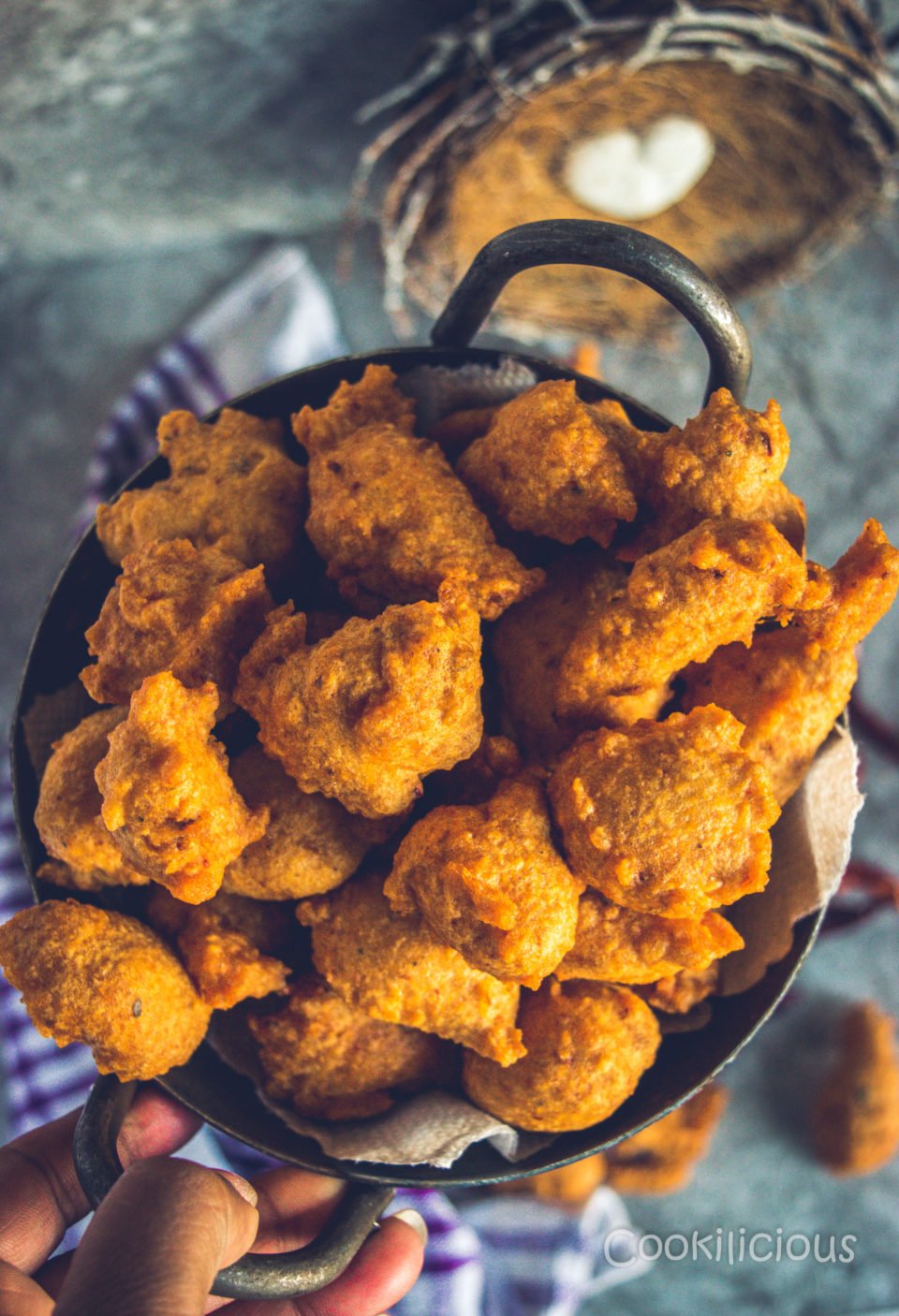
⭐️ Subscribe to the Cookilicious Newsletter and receive new recipes straight to your inbox! You'll receive my FREE Vegan Beginner's guide as a gift. Ready to elevate your cooking game? Purchase my Cookbook - The Essential Vegan Indian Cookbook today!
Recipe 📖
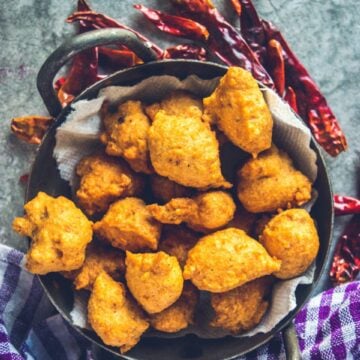
South Indian Medu Wada | Lentil Fritters
Equipment
Ingredients
- 2 cups urad dal
- 2 tablespoon raw rice
- 7-8 curry leaves
- 5 green chillies
- 1 inch ginger
- 1 teaspoon asafoetida
- Salt
- Oil for frying
Instructions
- Rinse and soak urad dal and rice in water for an hour.
- Drain the water and transfer it to a mixer grinder.
- Add curry leaves, asafoetida, green chillies, ginger, and salt to it.
- Blitz to make a smooth paste. Add just water if needed to help with grinding. The batter should be thick and not runny.
- Transfer to a bowl. Add salt.
- Mix. Heat oil for frying.
- Slit open a ziplock bag. Open it and sprinkle water on the surface. With wet hands, place a small dollop of batter in the center. Flatten it lightly and make a hole in the middle. Chef Tip - Be careful when working with water. You don't need too much. Just moist your hand and smear the ziplock surface with water.
- When the oil is hot, carefully drop the Medu Vadai in hot oil. Follow these steps to make more. Do not crowd the pan. Fry without flipping it for 2-3 minutes on medium flame. It should start turning golden.
- Then carefully flip to the other side and continue to cook till it turns golden at the bottom. There should not be any white spots left. It should turn golden evenly.
- Carefully take them out. Use paper towels to soak the excess oil. Make as many as you need and serve with Coconut Chutney, Sambhar, or Rasam.

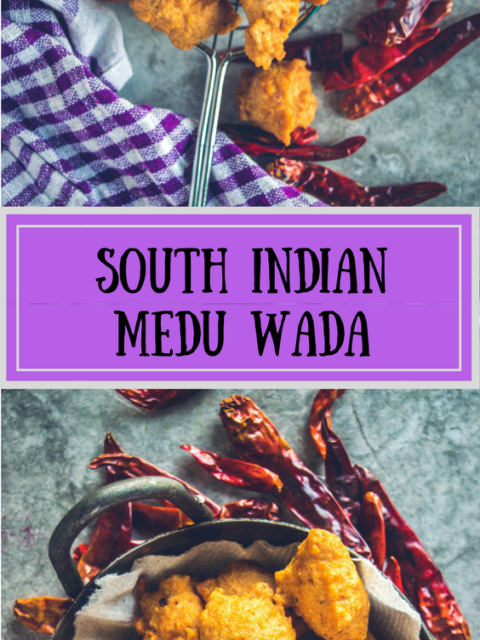

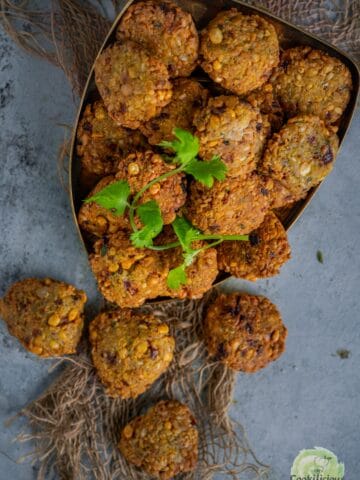
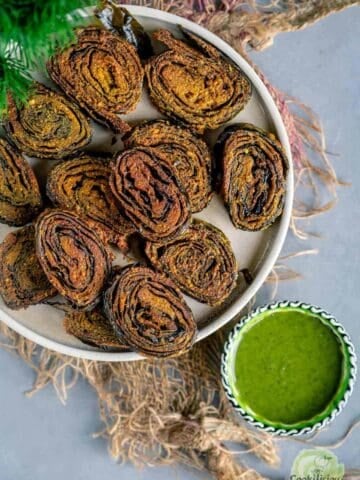
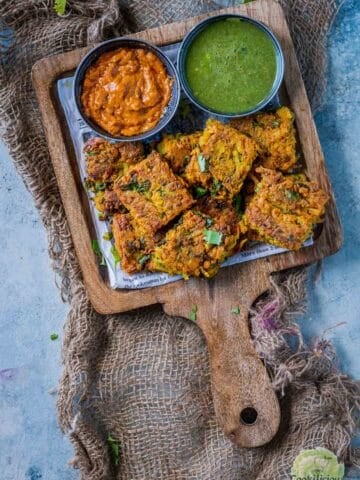
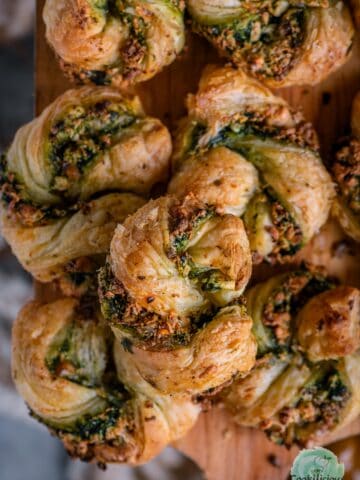
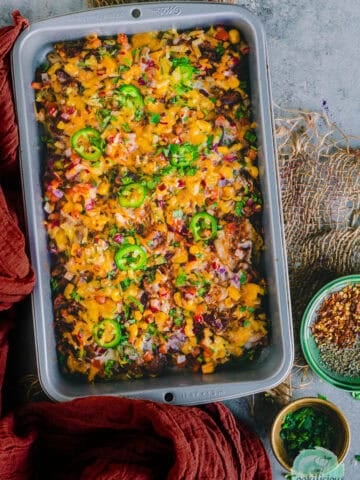
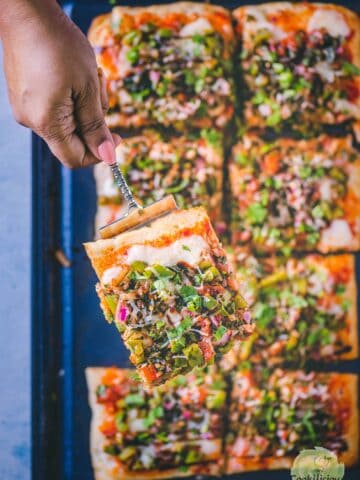
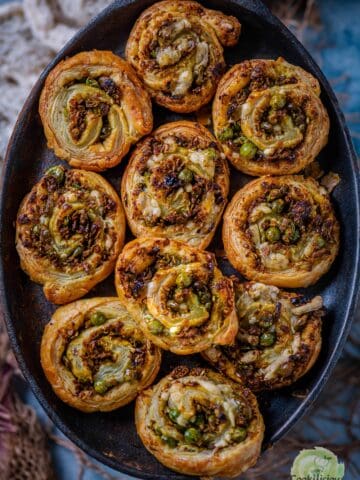
Leave a Reply